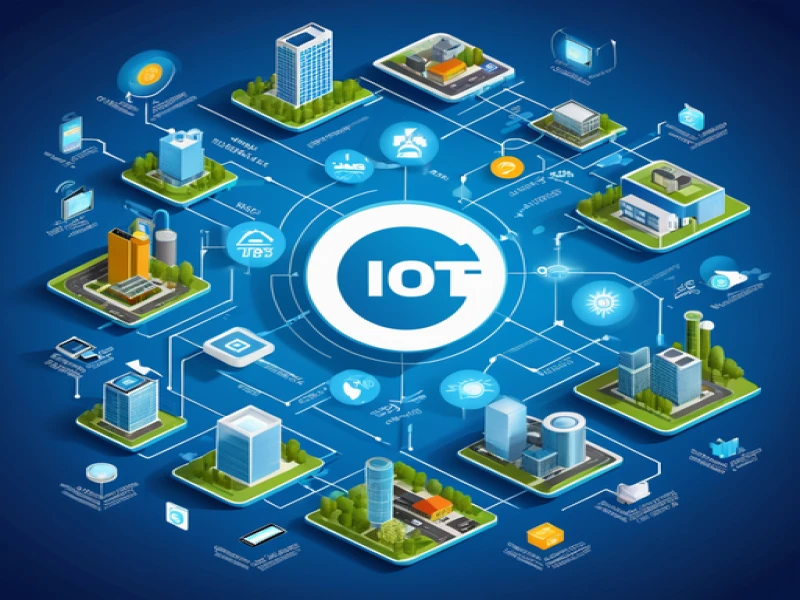
Top 12 IoT Protocols: Powering the Connected World
Top 12 Most Commonly Used IoT Protocols and Standards: Connecting Your Smart World
The Internet of Things (IoT) is transforming our world, connecting billions of devices and enabling automation, efficiency, and innovation across various industries. But with so many different devices and networks, it's crucial to understand how they communicate seamlessly. That's where IoT protocols and standards come in, providing the foundation for interoperability and data exchange.
This blog explores the top 12 most widely used IoT protocols and standards, covering their key features, strengths, use cases, and limitations to help you make informed decisions for your projects:
1. Wi-Fi (IEEE 802.11): The familiar wireless networking standard, known for its high bandwidth and extensive ecosystem, ideal for streaming media, video conferencing, and data-intensive applications in smart homes and offices. However, it can be power-hungry for battery-powered devices.
2. Bluetooth (IEEE 802.15.1): Another popular short-range wireless standard, offering low power consumption, making it suitable for wearables, sensors, and BLE (Bluetooth Low Energy) devices for proximity-based interactions and data transfer. However, its range and data rate are limited.
3. Zigbee (IEEE 802.15.4): A mesh networking protocol specifically designed for smart home and building automation, providing low power consumption, high reliability, and scalability with self-organizing networks. However, it's not as widely supported as Wi-Fi or Bluetooth.
4. LoRaWAN (Long Range Wide Area Network): Designed for long-range, low-power communication, ideal for remote sensors, asset tracking, and industrial applications over wider areas. However, its data rate is limited, and network setup can be complex.
5. Cellular (LTE-M, NB-IoT): Cellular networks offer wide coverage and reliable connectivity for IoT devices that require mobility or global reach. However, they can be expensive and have higher power consumption than some other options.
6. MQTT (Message Queuing Telemetry Transport): A lightweight messaging protocol designed for low-bandwidth, resource-constrained devices, perfect for sensor data collection and device communication in industrial and commercial settings. It's a publish-subscribe model, making it scalable and efficient.
7. CoAP (Constrained Application Protocol): Another lightweight protocol specifically designed for resource-constrained devices, providing a RESTful interface for web-like interactions even with limited capabilities. It's often used with MQTT for data exchange.
8. AMQP (Advanced Message Queuing Protocol): A versatile messaging protocol offering reliable message delivery, flexibility, and security, often used in enterprise and industrial IoT applications to bridge different systems and handle complex data flows.
9. DDS (Data Distribution Service): A high-performance protocol specifically designed for real-time and mission-critical applications, providing reliable data distribution and efficient data sharing, often used in industrial automation and control systems.
10. XMPP (Extensible Messaging and Presence Protocol): An extensible protocol originally designed for instant messaging, offering real-time communication and presence management, also utilized in some IoT applications for device interaction and messaging.
11. OPC UA (OPC Unified Architecture): An industrial communication standard specifically designed for machine-to-machine communication in automation and manufacturing, providing secure and reliable data exchange for complex industrial data.
12. Matter: A new industry-backed standard aimed at unifying smart home device communication, simplifying development and ensuring device interoperability across different brands and platforms, still under development but promising to significantly improve smart home experiences.
Choosing the Right Protocol:
The best protocol for your IoT project depends on various factors, including:
- Device capabilities: Consider power constraints, processing power, and memory limitations.
- Network requirements: Assess the need for coverage, bandwidth, latency, and reliability.
- Application needs: Understand the data type, volume, and real-time requirements.
- Security considerations: Evaluate encryption, authentication, and access control features.
- Interoperability needs: If seamless integration with other devices or platforms is crucial.
- Cost and complexity: Factor in license fees, hardware compatibility, and development effort.
By understanding these top 12 protocols and their characteristics, you can make informed decisions to build robust, efficient, and interoperable IoT solutions that connect your smart world seamlessly.
I hope this comprehensive blog is helpful! Feel free to ask if you have any further questions.


